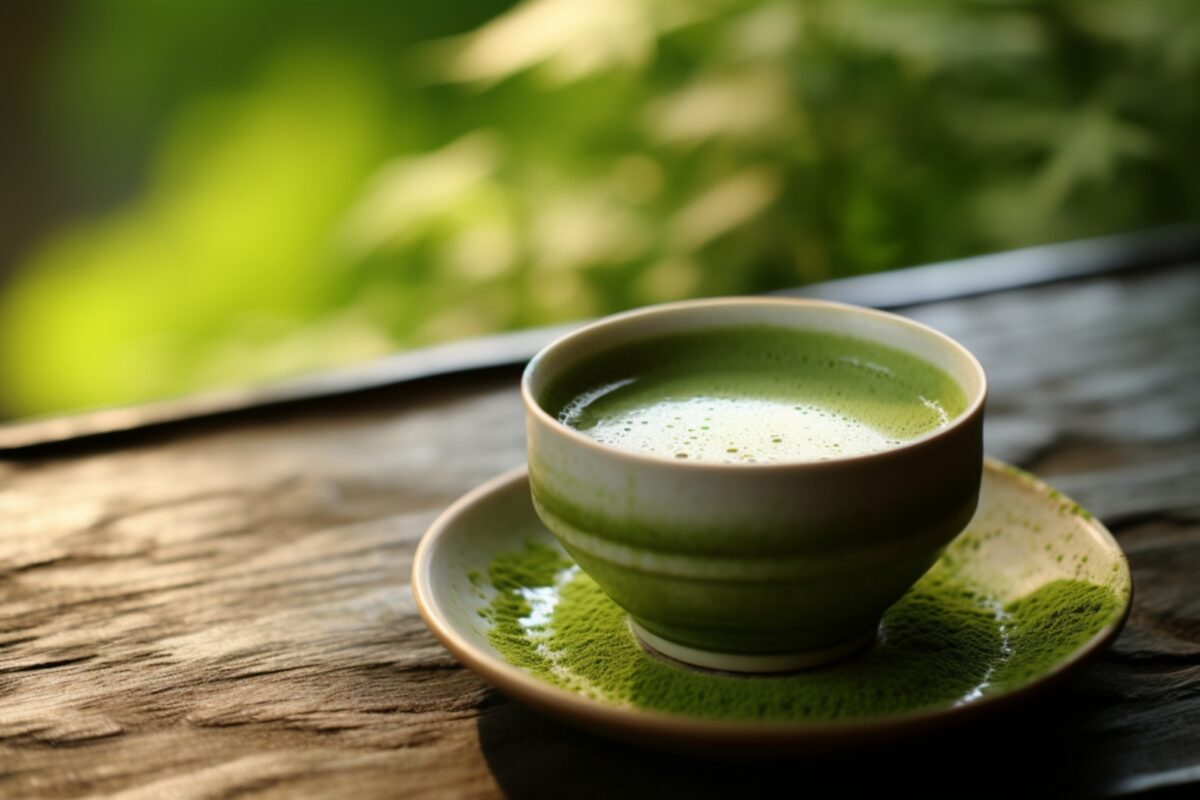The Power of Herbs in Anti-Aging
Herbs have immense power in anti-aging due to their rich antioxidant, anti-inflammatory, and healing properties. They can help slow down the aging process, improve skin health, boost cognitive functions, increase energy and vitality, and improve overall longevity.
Some popular anti-aging herbs include ginseng, turmeric, green tea, ashwagandha, gingko biloba, and rosemary. These herbs provide a natural and holistic approach to anti-aging. Incorporating them into your daily routine can significantly help in minimizing the signs of aging and preserving your youthful vigor.
10 Powerful Anti-Aging Herbs for Youthful Vitality
Remark: We are introducing only possible health effects known worldwide to the extent of various certainty. We can never confirm any improvement of deceases mentioned below by these herbs. Please consult a doctor or a professional if you try these herbs and expect their health effects.
Gingko Biloba: The Memory Enhancer
Gingko Biloba is a widely acknowledged anti-aging herb, known especially for its memory-enhancing capabilities.
Derived from one of the oldest tree species, this herb plays a crucial role in improving mental performance, notably in elderly people. It stimulates blood flow to the brain and has antioxidant properties that combat tissue damage, essentially slowing down the brain’s aging process.
Studies reveal that Gingko Biloba not only enhances memory recall but also sharpens concentration and attention span. Many also believe in its potential benefits in treating or preventing Alzheimer’s disease and other age-related cognitive disorders, making Gingko Biloba an ideal, natural memory booster.
Ginseng: The Energy Booster
Ginseng is widely recognized as a potent energy booster. This rooted herb is highly valued for various medicinal purposes, one of which is its anti-aging properties. Ginseng is packed with beneficial antioxidants that combat free radicals, thereby reducing oxidative stress.
Furthermore, it restores energy levels and enhances physical and mental performance, making it an excellent solution for those seeking to fight fatigue. The popularity of Ginseng in traditional medicine, especially in Chinese and Korean herbal remedies, is an indication of its usefulness. As an anti-aging herb, Ginseng can do wonders for your overall health!
Turmeric: The Inflammation Fighter
Turmeric, a vibrant yellow spice often used in Asian cooking, is celebrated for its anti-inflammatory properties. Known as one of the leading anti-aging herbs, Turmeric contains a chemical compound called curcumin, which fights inflammation at a molecular level.
Recent studies suggest its potential to protect against chronic diseases such as heart disease, cancer, and Alzheimer’s. Besides the potent anti-inflammatory effects, Turmeric also acts as a powerful antioxidant, neutralizing free radicals in the body. Adding Turmeric to your diet is an excellent way to reduce inflammation and potentially slow down the aging process.
Ashwagandha: The Stress Buster
Ashwagandha, an esteemed herb in Ayurvedic medicine, is often referred to as a “stress buster” thanks to its potent adaptogenic properties. This herb can help the body resist different types of stress, promoting mental and physical health. It can regulate the body’s systems and stabilize physiological processes, thereby improving resilience to stress.
Numerous research studies have confirmed Ashwagandha’s ability to reduce cortisol levels, boost brain function, and help fight anxiety and depression. Moreover, it acts as an anti-aging herb, enhancing vitality and immunity while slowing the aging process. Truly, incorporating Ashwagandha into your routine could be beneficial in managing daily stress and promoting overall health.
Green Tea: The Antioxidant Powerhouse
Green tea, renowned globally for its health benefits, is an antioxidant powerhouse among anti aging herbs. Its richness in polyphenols, particularly Epigallocatechin Gallate (EGCG), makes it a potent antioxidant. These antioxidants fight off free radicals in our bodies, reducing cell damage and preventing aging signs.
They also contribute to improved brain function, fat loss, and lower risk of certain types of cancer.
Apart from its unique antioxidant potential, green tea also helps to protect the skin from UV rays and improve skin hydration and elasticity. A daily cup of green tea can significantly contribute to healthier and younger-looking skin and overall wellbeing.
Gotu Kola: The Skin Toner
Gotu Kola, Centella asiatica, is a powerful anti-aging herb renowned for its skin toning properties. Packed with antioxidants, it fights free radicals that cause skin aging, improving the skin’s elasticity and reducing wrinkles. It also boosts collagen production, crucial for maintaining skin’s youthful texture.
Gotu Kola is known for its healing ability and can reduce scars, blemishes, and other skin imperfections. It’s excellent for toning the skin, making it firm and supple. Incorporating this natural toner into your skincare routine can possess long-lasting benefits for skin health and youthfulness.
Rhodiola Rosea: The Mood Lifter
Rhodiola Rosea, also known as the golden root, is a powerful anti-aging herb well-known for its mood-lifting properties. Emerging research indicates this adaptogenic herb helps in countering depression, stress, fatigue, and other conditions affecting mental health.
Its rich antioxidant content aids to combat oxidative stress, one of the primary contributors to aging signs. These properties make Rhodiola Rosea an incredible natural solution for boosting mood and fighting aging simultaneously. So, integrating Rhodiola Rosea into your wellness routine may yield profound benefits for your overall wellbeing and longevity – a glowing testament to the potency of natural herbs.
Holy Basil: The Metabolism Regulator
Holy Basil, also known as Tulsi, is a highly revered herb in Ayurveda, renowned for its potent anti-aging benefits. Holy Basil aids in regulating metabolism, thus controlling weight gain and promoting healthy digestion. This herb’s antioxidants shield the body from oxidative stress, preventing signs of premature aging.
Furthermore, it balances the body’s hormone levels, which can impact the metabolic rate, improving overall well-being. By optimizing your metabolism, Holy Basil ensures the proper functioning of organs, leading to rejuvenated, healthier-looking skin. Therefore, not only is Holy Basil an excellent metabolism regulator, but it’s also one of the most effective anti-aging herbs available.
Milk Thistle: The Toxin Eliminator
Milk thistle, also known as Silybum marianum, is celebrated worldwide for its phenomenal detoxifying abilities. This wondrous herb contains silymarin, a potent anti-inflammatory and antioxidant compound. As a “Toxin Eliminator,” milk thistle promotes liver health by preventing free radical damage and stimulating cell regeneration. This helps the body effectively flush out harmful toxins.
In the context of anti-aging, milk thistle can contribute to overall well-being and longevity by defending against oxidative stress, a major cause of aging. This means fewer wrinkles, age spots, and other age-related signs. Furthermore, its anti-inflammatory properties may support skin health, offering a youthful glow. Therefore, making milk thistle a part of your regular dietary regimen could be beneficial. By promoting internal health, milk thistle indirectly supports vibrant, ageless skin.
Aloe Vera: The Skin Soother
Aloe Vera, known as one of the trusted anti-aging herbs, is hailed globally for its skin soothing properties. It contains antioxidants like vitamins A, C, and E, which are known to combat against free radicals, the leading cause of aging. Vitamin B12 another element found in Aloe Vera also contributes to preventing aging.
The plant produces two substances, gel and latex, both of which are extensively used for creams, lotions and other cosmetics that people apply directly on the skin. Regular use of Aloe Vera not only soothes the skin but also helps in diminishing fine lines and wrinkles, thus making the skin look younger and fresher.
Frequently Asked Questions About Anti-Aging Herbs
1. How do anti-aging herbs work?
Many of these herbs contain antioxidants which help to neutralize harmful free radicals that can cause aging. Some also promote collagen production or enhance skin’s elasticity.
2. How to take anti-aging herbs?
They can be consumed in various forms like herbal teas, skin creams, or dietary supplements. It’s important to follow recommended dosages and consult a healthcare provider before starting any new supplement.
4. Are there any side effects?
Common side effects can include digestive upset, skin irritation, or allergic reactions. Some may also interact with medications, so it’s critical to consult with a healthcare professional.
5. What are prevention methods for premature aging?
In addition to using anti-aging herbs, maintaining a healthy lifestyle with balanced diet, regular exercise, plenty of sleep, and good skin care can also slow down the aging process.









 “
“















